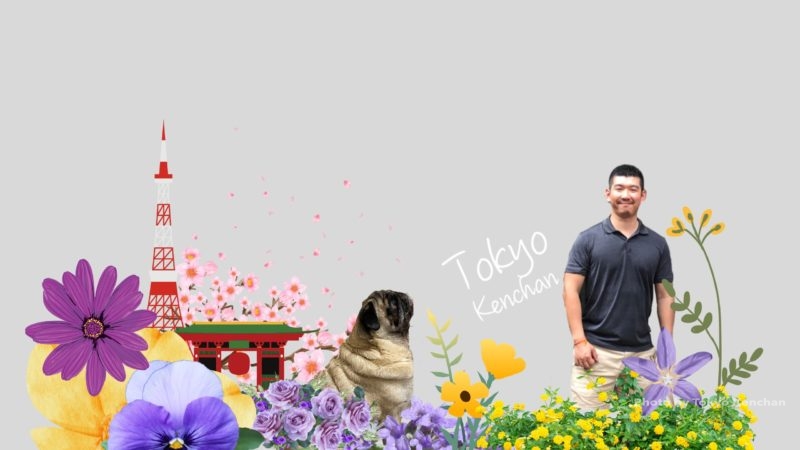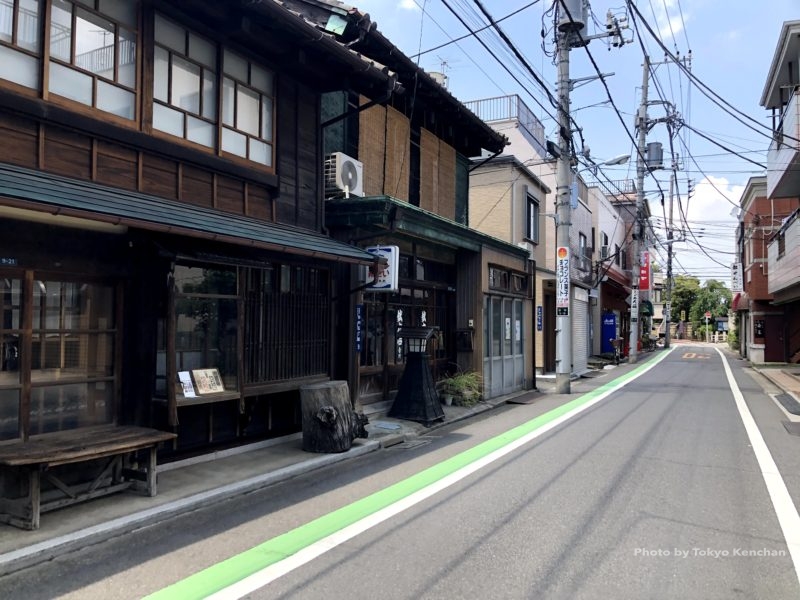The 10 Best Areas of Tokyo for Sight Seeing
Tokyo is one of the most populated metropolitan area in the world, and different neighborhoods continue endlessly.
It’s a walkable city, so it’s your freedom to explore around the city and find something different from your culture.
Today I’d like to introduce you to maze of Tokyo so that you can get some idea on where to go and how to travel around this city.
You can also watch this contents in my YouTube video.
10 Must See Areas of Tokyo for Sight Seeing
Tokyo City Overview
Tokyo is facing the Pacific Ocean side of Honshu island of Japan. It’s the center of politics, economy and culture of Japan.
Around Tokyo city center, there are 23 political district called KU (ward in English) , and the major sight seeing spots are near the city center such as Chiyoda, Chuo, Minato, Taito and Shinjuku and Shibuya ward.
But this district name is not so important to navigate yourself, Tokyo people also don’t used them to point the destination unless it has the same station name like Shinjuku and Shibuya.
In Tokyo, you’ll find different character of each neighborhood. Busy streets with neons, sub culture center, a quiet shrine and old streets with trace of old Edo.
I think you will sometimes hear this word “Edo” when you are in Tokyo. One of the major subway in Tokyo is called Oedo Line, which means big Edo.
History of Tokyo cityscape
Edo is the former name of Tokyo.
Compared to western parts of Japan, Tokyo has a younger history, and was a rural fishing village until around year 1600.
From the wetland by the bay, it has become one of the world’s largest city. The key was to maintain a clean water supply system and to control the river.
Japan also closed border and it has been almost isolated for 200 years and has little influence from foreign countries.
Sumo wrestling, kabuki, and food culture matured in Edo, forming the basis of modern Tokyo and Japan.
Even though the culture and people remain, you might notice that there aren’t many old buildings left in Tokyo.
The several Great Fires during Edo period, the Great Kanto Earthquake, and the air raids during the War, almost all were burned.
But each time, the Tokyo has been revived, and Tokyo has become a city where old Edo culture, Japanese culture, and new modern culture intersect.
Major Areas to visit

So I picked 10 major areas in Tokyo that are probably near the top of the list as tourist’s destination.
Asakusa
First is Asakusa. Asakusa has the famous Sensoji Temple and many many little souvenir shops and dining place around the temple. Without doubt it’s on the top of the list in Tokyo. My favorite time to visit is when the temple is closing, you can get souvenir before the shops close, and many dining place starts to open for dinner. And also, it’s nice to stroll around the lighten up temple after all the visitors left. You also see the Tokyo Sky Tree across the river, and it’s just one station away by Tobu line. You can also walk the pedestrian deck along the canal.
-
- Sensoji
- Tokyo Sky Tree
Ueno
Ueno is a neighborhood 3 stations north of Tokyo stations on Yamanote line. Ueno has two faces, one is a busy streets and a little shady down town atmosphere, and the other one is Ueno Park. Ueno park has zoo, ponds, and home of many museums such as the National museum. Also since the most of the park used to be the part of temple in Edo period, there are some important temples and shrines left in the park. After walking through the busy street of Ameyoko, you can visit museum or just sitting on bench by the pond would be nice.
-
- Ueno Park, National Museums, Yanaka, Okachimachi
- Ameyoko
- See A local’s Neighborhood Guide to UENO, Tokyo
Akihabara
Akihabara is a town has been known as an electric town, but it’s more known as a place for Japanese sub-cultures such as Anime, Cosplay, figures, games and so on. If you are interested in one of more of those hobbies, Akihabara would be a good place to walk around and find your favorite spots. If possible, it might be better to go on Sunday so you can walk on the middle of street and the town has some more festive atmosphere. But if you are taking photos, night might be more photogenic.
-
- Sub Culture town
- Kanda Myojin Shrine
Tokyo Station Area
This is the area I categorized as one to make it easy, but it might be a little big as one destination. The area is a center of business of Tokyo, so you might feel a little out of place in the rush hour time, but there are some places to see and the first thing that comes into your eyes are large Imperial Palace, where Japanese emperor lives. You can enter the East Garden, and see the site of Edo castle. The Tokyo Station itself is also an attraction as it has a big underground shopping mall. Especially what you might want to check out is Tokyo Character street which you can see many Japanese goods, and Ramen Street that some different ramen shops are gathering.
It’s not far from Ginza, a major shopping streets of Tokyo. I’m sure you have international brands shop in your country, but seeing the flagship shops of Japanese brands such as Uniqlo and MUJI might be fun. Ginza also has lots of shops by Japan’s different regions. You can find local produces and many of them has restaurants that you can eat the local cuisines. There are 47 regions called KEN in Japan, and 26 of them has a store in Ginza area as far as I know.
-
- Imperial Palace
- Inside Tokyo Station – Character Street, Tokyo Ramen Street
- Ginza
Minato
Even though I said Tokyo people don’t use wards name so much as destination, I see the word of Minato often. Minato is known as a high status and wealthy area that average income is very high comparing with other parts of Tokyo. There aren’t a town that specifically recommended to visitors, but Zojoji temple and Tokyo tower is one important icon of Tokyo. The popular artist venue Team Lab. Borderless is going to move from Odaiba to near Tokyo Tower in near future.
-
- Tokyo Tower
- Zojoji
- Team Lab (Opening after 2023)
Shinjuku
Shinjuku is located in the west of Tokyo, and it has Shinjuku station which became the busiest station in the world. The town shows the different face depends on where you get off the station, and you see the business district in the west has Tokyo Metropolitan Government and major international brand hotels such as Hyatt and Hilton. Eastside has Isetan department store which makes the biggest sales in Japan. Shinjuku also has human side of town with old drinking alley like Omoide Yokocho, vivid night town of Kabukicho and Nichome that gay bars gathers. Right next to the vivid city, Shinjuku Gyoen National Garden is a large garden with various theme that you can enjoy nature all around the year from Cherry blossom to autumn leaves.
-
- Tokyo Metropolitan Government Bldg.
- Isetan department store
- Shinjuku Gyoen National Garden
- Kabukicho, Omoide Yokocho, Golden Gai, Shinjuku ni-chome
Harajuku
Harajuku is the neighborhood between Shinjuku and Shibuya. The town has several different faces. The first thing you notice is the large Meiji Shrine laying in front of the station, which is the artificial forest that is made more than 100 years ago. The other side of Harajuku station has many shopping streets that is popular to young teenagers to adults. Takeshita street is a street with lots of shops for teen age to young crowd, and Ura Harajuku for a little more older crowed, and Omotesando is a street for adult.
-
- Takeshita Street, Ura Harajuku, Meiji Jingu, Omote Sando,
- Eat – Kura Zushi, Crape
Shibuya
Shibuya is probably the most iconic scene of modern Tokyo and you might have seen at least one photo of Shibuya crossing. Shibuya is another train terminals, and the town collects many young Japanese for shopping and gathering. Here you see modern side of Tokyo people’s life and culture and trendy spots such as Miyashita Park and Shibuya Sky.
-
- Scramble Crossing, Shibuya Sky, Miyashita park
Fukagawa
Fukagawa is an old name of this area on the east side of Sumida river. I categorized this area as Fukagawa, but actually area is spread to several different stations of Oedo line. The area is not a big tourist destination, but you see a typical downtown with many temples and shops among residential area. If you wish to go a little off from touristy areas and see Tokyo’s downtown, it’s a good area to stroll around.
-
- Fukagawa Fudoson,
- Kiyosumi Garden, Edo-Fukagawa Museum
Daiba
Daiba is an area on the other side of Rainbow Bridge from Tokyo city center, and it’s a new development with beach and shopping centers. You can take this automated system of Yurikamome from Shinbashi station to Odaiba Kaihin Koen station and walk to the Daiba which used to be a battery island to protect Tokyo. The beach overlooking Tokyo city center is crowded with Tokyo people who get sun tanned and play beach valley in summer. For the view of Tokyo, I more recommend Toyosu Gururi Park. It’s a park near Shijomae station, and you can see the beautiful skyline of Tokyo and Rainbow bridge. It might be also good to come here by rental bicycle.
-
- Odaiba Sea Side Park,
- Gandam
- Toyosu Gururi Park
It’s not a walking distance between areas, but you might be able to walk or do jogging if you have some energy left. Fortunately, Tokyo is safe so nobody trying to get anything from you, cops doesn’t stop you. So you have freedom to explore.
I hope there were some areas that draw your interest. 🙂


Comments